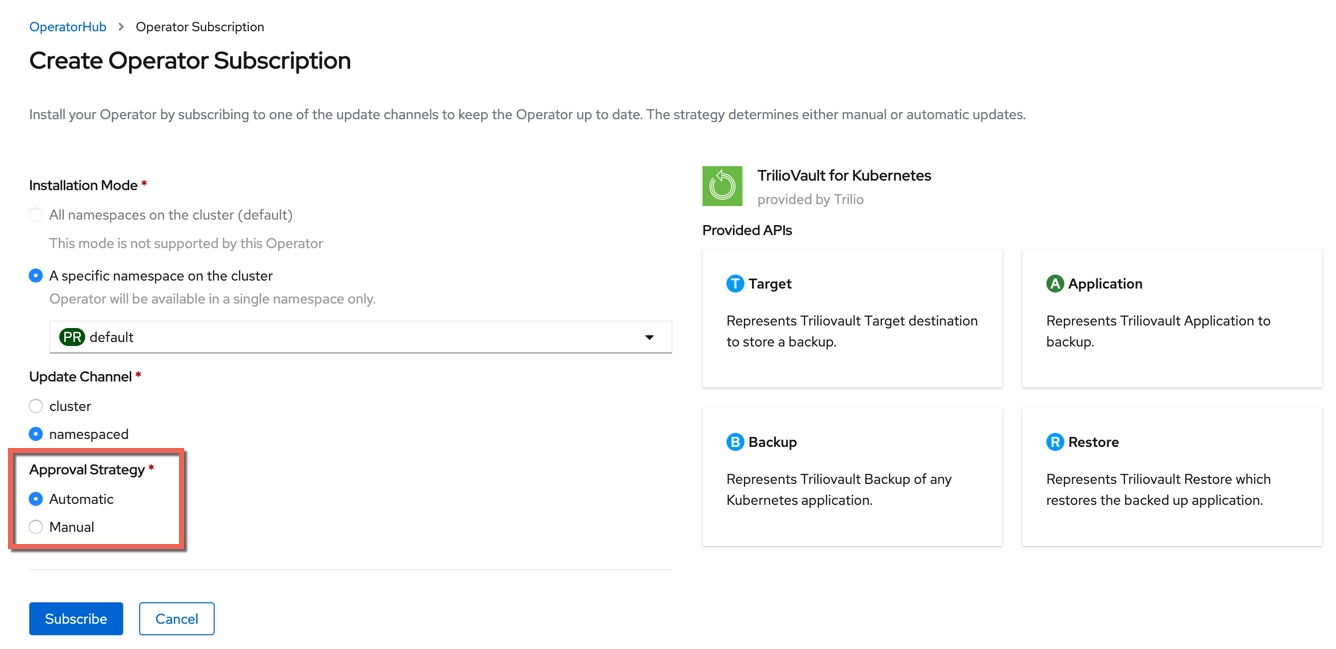Upgrade
Learn about Upgrading Trilio on OpenShift and Upstream Kubernetes
RedHat OpenShift
OpenShift updates are delivered directly through the Operator Lifecycle Manager framework.
When installing the Trilio Operator, the cluster admin can specify how to update via an approval strategy - either manual or automatic.
A manual subscription will require manually approving the new update that is available. An automatic subscription will automatically update the application when an update is available.

Enable/Disable Openshift Console Plugin
Navigate to Installed Operator and search for Trilio for Kubernetes. Inside the Detail section will find console plugin in side tab as marked in image below.

After clicking on enabled tab pop-up with option enable and disable for enable/disable console plugin on openshift cluster.

Upstream Kubernetes
For Upstream or non-OpenShift environments, Trilio provides its own Operator for installing and managing instances of Trilio for Kubernetes. Follow the steps below to upgrade the operator
Find the helm repository for Trilio Manager using the following command:
2. Update your repo to receive the latest updates:
3. Update your upstream operator:
Once the operator pod comes up, it will automatically install the corresponding Trilio version.
Last updated